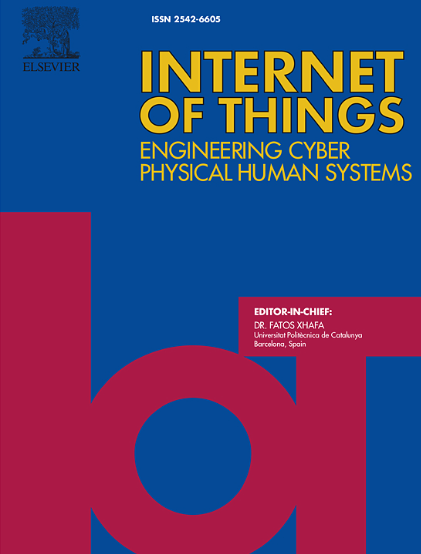Deep Belief-MobileNet1D: A novel deep learning approach for anomaly detection in industrial big data
IF 6
3区 计算机科学
Q1 COMPUTER SCIENCE, INFORMATION SYSTEMS
引用次数: 0
Abstract
Early fault or unusual behavior detection can reduce the risk of equipment failure improve performance and increase safety. Anomaly detection in industrial big data involves identifying deviations from normal patterns in large-scale datasets. This method assists in preventing equipment failures optimizing maintenance schedules and raising overall operational efficiency in industrial settings by identifying anomalous behaviors or outliers. Through the utilization of deep learning procedures, this investigation endeavours to apply are fined procedure for anomaly detection in industrial big data. Pre-processing, feature selection and Anomaly detection are three steps of a process that are used. The input data is first fed into MapReduce framework where it is divided and pre-processed. Imputation of missing data and Yeo-Jhonson transformation are then applied to eliminate noise from data. After pre-processed data is generated, it is put through a feature selection phase using Serial Exponential Lotus Effect Optimization Algorithm (SELOA). The algorithm is created newly by combining Lotus Effect Optimization Algorithm (LOA) with Exponential Weighted Moving Average (EWMA). Finally, anomaly detection is done using the features that are selected by means of Deep Belief-MobileNet1D, which combines MobileNet1D and Deep Belief Network (DBN). With a recall of 96.2 %, precision of 92.8 %, F1 score of 94.5 % and accuracy of 95.9 %, results show that the proposed strategy surpasses standard approaches. These findings demonstrate Deep Belief-MobileNet1D model's ability to detect anomalies in industrial big data.
Deep Belief-MobileNet1D:一种用于工业大数据异常检测的新型深度学习方法
早期的故障或异常行为检测可以降低设备故障的风险,提高设备的性能和安全性。工业大数据异常检测涉及识别大规模数据集中正常模式的偏差。该方法通过识别异常行为或异常值,有助于防止设备故障,优化维护计划,提高工业环境中的整体运行效率。通过利用深度学习过程,本研究试图将定义好的过程应用于工业大数据的异常检测。预处理、特征选择和异常检测是整个过程的三个步骤。输入数据首先被输入到MapReduce框架中,在那里它被分割和预处理。然后利用缺失数据的插值和杨约翰逊变换去除数据中的噪声。在生成预处理数据后,使用串行指数莲花效应优化算法(SELOA)进行特征选择阶段。该算法是将莲花效应优化算法(LOA)与指数加权移动平均算法(EWMA)相结合而形成的新算法。最后,利用结合MobileNet1D和Deep Belief Network (DBN)的Deep Belief-MobileNet1D算法所选择的特征进行异常检测。召回率为96.2%,准确率为92.8%,F1得分为94.5%,准确率为95.9%,结果表明该策略优于标准方法。这些发现证明了Deep Belief-MobileNet1D模型检测工业大数据异常的能力。
本文章由计算机程序翻译,如有差异,请以英文原文为准。
求助全文
约1分钟内获得全文
求助全文
来源期刊

Internet of Things
Multiple-
CiteScore
3.60
自引率
5.10%
发文量
115
审稿时长
37 days
期刊介绍:
Internet of Things; Engineering Cyber Physical Human Systems is a comprehensive journal encouraging cross collaboration between researchers, engineers and practitioners in the field of IoT & Cyber Physical Human Systems. The journal offers a unique platform to exchange scientific information on the entire breadth of technology, science, and societal applications of the IoT.
The journal will place a high priority on timely publication, and provide a home for high quality.
Furthermore, IOT is interested in publishing topical Special Issues on any aspect of IOT.
 求助内容:
求助内容: 应助结果提醒方式:
应助结果提醒方式:


